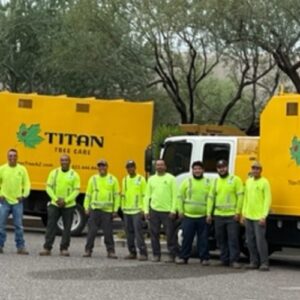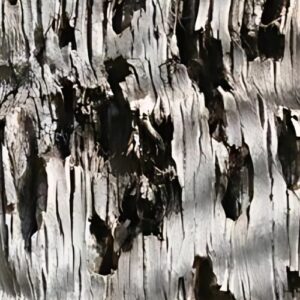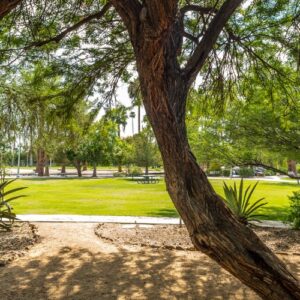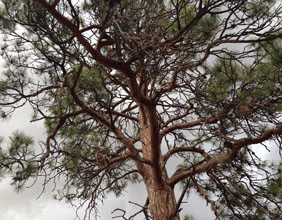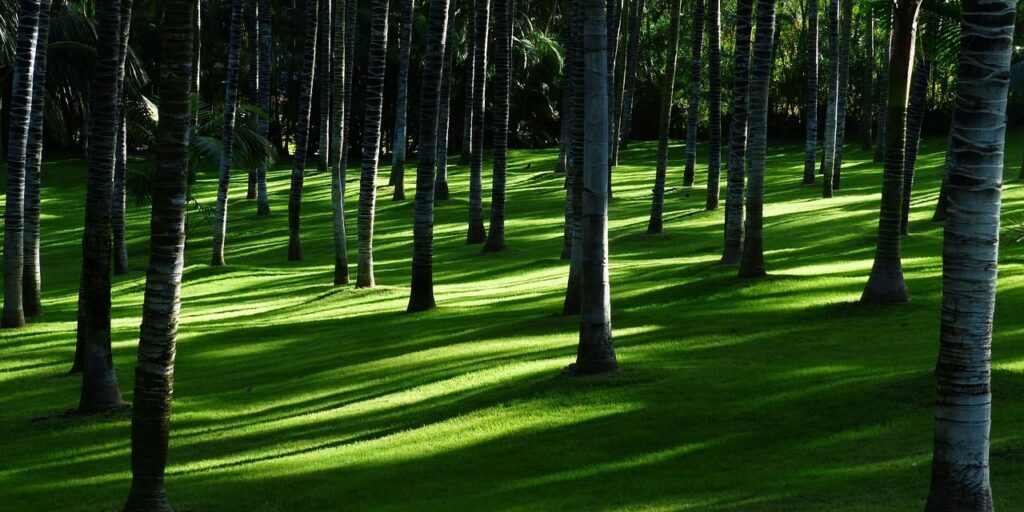
We’ve gone over the myriad of benefits that trees provide in earlier blog posts: they remove pollutants, decrease stress, improve health, prevent storm runoff, provide food and shelter for wildlife…the list is endless. Yet I’m sure most of us in the greater Phoenix and Anthem areas would agree that there’s one reason in particular that we love trees: shade.
Unlike man-made shade structures, trees actually lower the temperature of the air around them through a process called transpiration. So, when possible, planting a tree instead of building a structure reduces the overall temperature. In a city like Phoenix where the temperatures seem to keep rising every year, that’s important.
Most yards in our area are small, however, so the options are limited when choosing a native tree that provides shade but doesn’t grow too tall, have invasive roots, or take up too much of your yard.
Here are our suggestions for the best shade trees to plant:
1. Desert Willow (Chilopsis linearis)
Desert Willows naturally take a shrub-like form but can be pruned into a tree. They provide shade in the summer but lose their foliage in the winter, allowing the winter sun to reach your house.
Known for their trumpet-like flowers that range from white to deep purple, you can spot desert willow trees all over our area in the spring.
A desert willow tree should grow to about 30 feet tall.
2. Native Mesquite (Velvet Mesquite) (Prosopis julifora var. velutina)
The velvet mesquite tree is native to Arizona (unlike the Chilean and Argentine varieties) and grows about 25 feet tall and 35 feet wide. You’ll find it growing wild near washes – be careful if you go near as it can have thorns up to three inches long.
Though it is a small tree, because of its multiple trunks and spreading crown, it doesn’t work well in small or confined areas, so make sure you have plenty of room for it to grow!
Newly-planted native mesquite trees should be watered every once a week or so during the first year, but require no supplemental water once they are established. Velvet mesquites have an especially deep root system, so be sure not to plant it near sewer or water pipes, especially if there is a chance of them being cracked or broken.
3. Feather Bush/Desert Fern (Lysiloma thronberi)
Feather Bush trees are aptly named, as they do prefer to grow into giant bushes, but can be properly pruned to become small trees. They’re messy little trees as the flowers drop around May and June, and fruit pods fall in the fall and winter – so don’t plant them near a pool.
They will usually grow about 20 feet tall but will spread out more than 20 feet. The leaves turn yellow in the spring and the tree produces flowers that look like white puff balls.
4. Desert Ironwood (Olneya tesota)
Growing to 30 feet tall with about the same amount of spread, the ironwood gets its name from its incredibly tough wood. In the desert, it provides nutrients and shelter for small animals. During the spring months, you’ll notice clusters of pink or white flowers. When young, the trees have thorns, but you won’t find them on mature ironwood trees.
Under normal growing conditions, the desert ironwood tree sheds its leaves during dry periods to conserve water. If it receives (some) supplemental water, it holds on to its leaves. We say SOME water because over-watering this tree can kill it, so be sure its not near water from your irrigation system.
5. Arizona Ash (Fraxinus velutina car. glabra)
If you’re a fan of trees with leaves that change color, you might consider the Arizona ash tree. It grows quite large – up to 45 feet tall and just as wide – and the dark green leaves turn to yellow in the fall (or more likely here, in the winter).
Unlike some of the other trees listed here, it will provide dense shade for your lawn or house. It prefers full sun, an occasional watering during the hot, dry summer, and an occasional treatment of iron chelate fertilizer.
6. Screw Bean Mesquite (Prosopis pubescens)
The screwbean mesquite gets its name from the twisted seedpods that resemble the markings on a screw. Birds, animals, and even coyotes eat these seedpods, and they have been ground into flour by human civilizations for centuries.
The screwbean mesquite grows to about 25 feet tall and is commonly found along streams and valleys. Because of its short stature, it is a popular tree to plant under power lines.
7. Blue Palo Verde (Parkinsonia florida)
Our state tree is easily recognized by its light green bark and by the bright yellow flowers in spring. Palo verde trees grow rapidly and can reach 30-40 feet tall but most often grow to about 25 feet with a 25 foot spread.
Choosing the Right Tree
Keep in mind that most of the native trees will grow taller if they receive additional irrigation. But, in general, our native trees will survive well on just rainwater after they are established.
Some of the trees listed above provide light shade, a few offer a denser shade but often take up more space. Take account of what type of yard you have, how much room you have for a tree, and what its purpose would be before you plant. There’s nothing worse than the wrong tree being planted in the wrong place – it just leads to many issues in the future. Read our article on how to choose the right tree for your area.
Free Shade Trees
The first two trees listed (desert willow and native mesquite) are part of the free tree program from SRP. In order to receive a free tree, you have to be an SRP customer and attend a free workshop. See the rest of the qualifications on the SRP website. https://srpnet.com/energy/rebates/shadeTrees.aspx You can see the full list of trees here, but note that not all of them are approved to be planted in Anthem.
In Summary
Whatever tree you choose, we hope that it will not only help keep your home cool during the summer months, but that you will enjoy watching it grow and thrive in your yard.
More Articles Like This

Titan Tree Care is a full-service tree care company located in Anthem, AZ and serving all of North Phoenix. We offer a wide range of services to meet your tree care needs, including tree and palm trimming, tree pruning, tree removal, stump grinding, and more. We also offer insect or disease treatments and fertilization services. We are dedicated to providing high-quality, safe, and effective tree care services to our customers and work hard to ensure that your trees are healthy and look their best.





